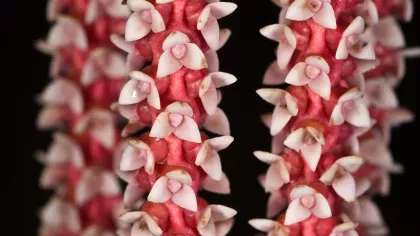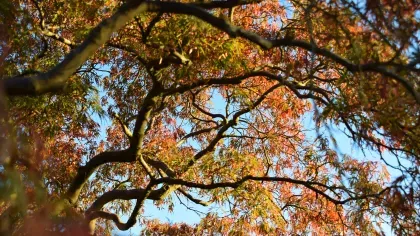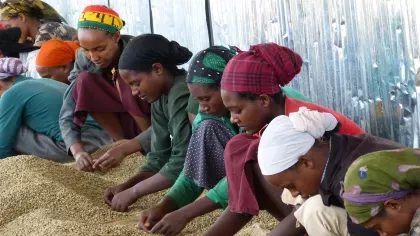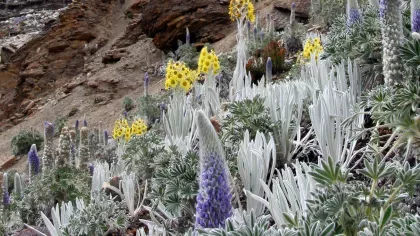4 September 2017
Safeguarding our protected areas and rare species from climate change
Sarah Veniard explores the collaboration between Kew, Conservation International and six leading universities who are investigating how climate change will affect protected areas and rare species in them.

The Project
Protected areas such as national parks are at the core of global efforts to protect biodiversity, but climate change is predicted to have dramatic effects on species distributions and habitats, such as the iconic quiver tree of southern Africa which is dying out in some areas because of increased drought. Understanding these changes will help us to decide what is needed to prevent climate-related extinctions.
The Royal Botanic Gardens, Kew is collaborating with Conservation International and six universities across the globe on the Spatial Planning for Protected Areas in Response to Climate Change (SPARC) project. The project is collecting information from three continents to model the effects of climate change on 100,000 rare species in tropical protected area ecosystems, to see whether they will change or decline with the temperature changes using analytical techniques developed under the Botanical Information and Ecology Network (BIEN) project at the University of Arizona.
Kew’s Role
Kew hosted a SPARC workshop in May this year to coincide with our State of the Worlds Plants Symposium, where we investigated threats to global plants such as climate change and their resilience to those changes. The SPARC workshop focused on information being collected for the project, current innovations in climate modelling and the use of plant traits to predict likely climate change effects on species.
The project is part of a partnership between the Natural Capital and Plant Health team at Kew and the University of Leeds, School of Geography. Protected areas are not only important for conserving biodiversity, they also play a key role in maintaining ecosystem services such as carbon sequestration, water catchment and regional rainfall. Professor Jon Lovett, Chair in Global Challenges at the University of Leeds and adjunct Professor of Natural Capital at Kew, and Kew employee Sarah Veniard are both part of the core SPARC team. The project collaborates with Kew scientists and experts in species conservation and climate change, who are contributing data on plant species in key regions.
Future proofing our planet
The SPARC project presents a new view on climate change, from the perspective of plants. Pioneers of this ground-breaking research have already been working with the information collected to determine how climate change will affect the plants, animals and ecosystems that rely on them. An ecosystem is a delicate network that can easily be degraded, making it difficult for species that live in them to survive, including humans.
Patrick Roehrdanz from Conservation International and Managing Scientist for the project emphasizes that the SPARC project will allow governments, scientists and conservationists to identify regions that, if protected, will preserve biodiversity and critical ecosystems. The goal is to build networks of protected areas that will reduce extinctions due to climate change, while at the same time delivering clean water, tourism opportunities and numerous other benefits to people.
The May SPARC meeting at Kew was an inspiring gathering including leading scientists from South America, Africa and China. The next meeting will be in Cape Town in September to coincide with the Future Climate for Africa conference. Stay tuned for an update!








